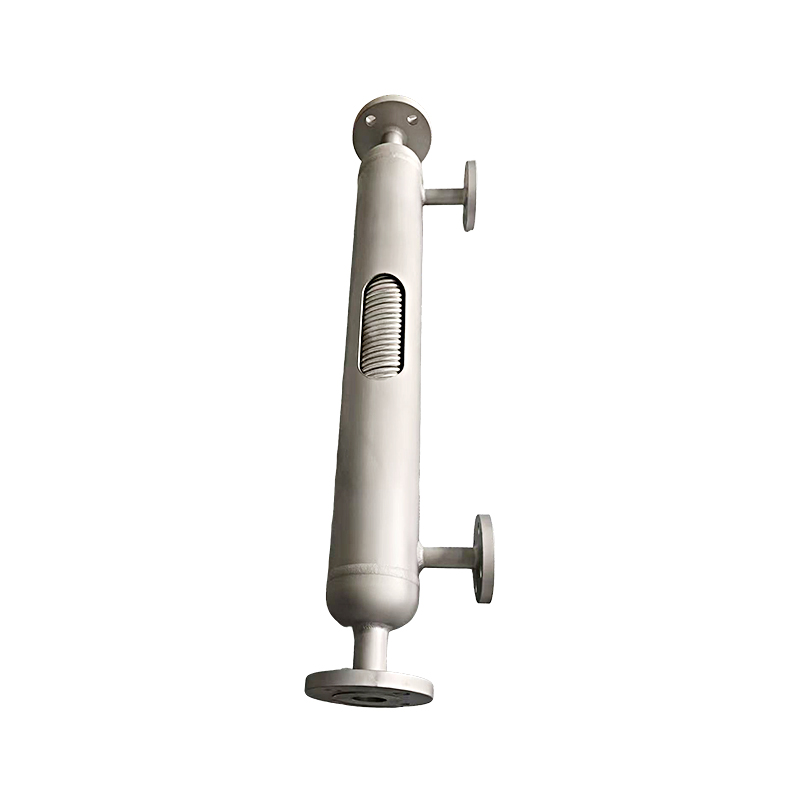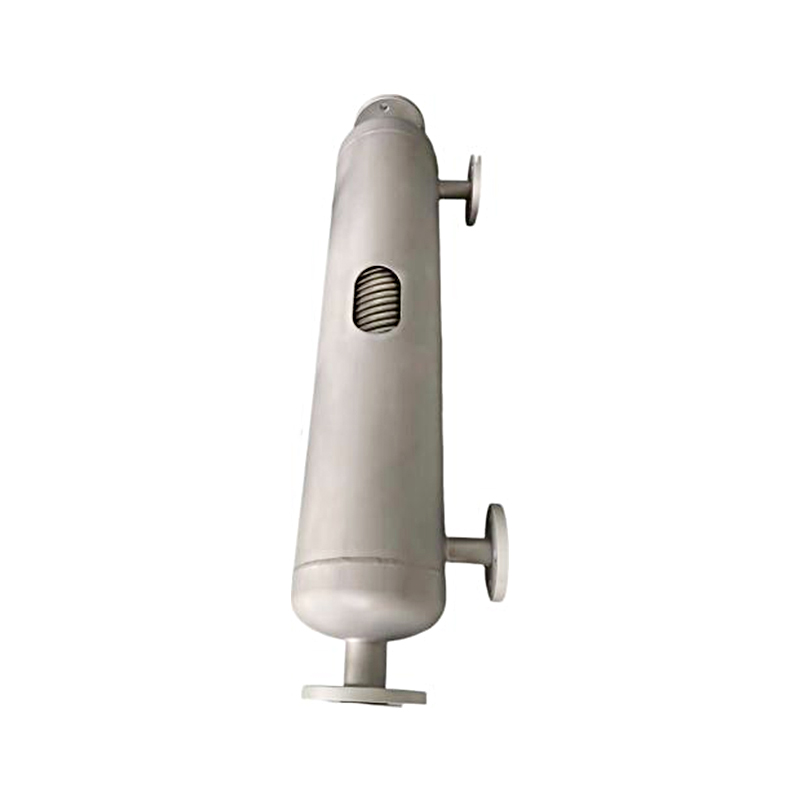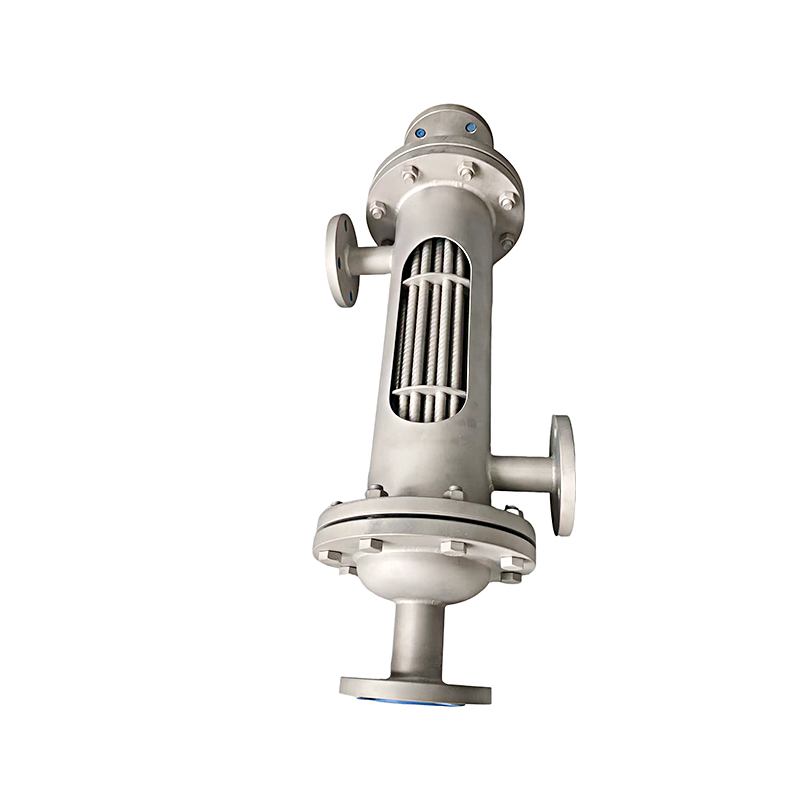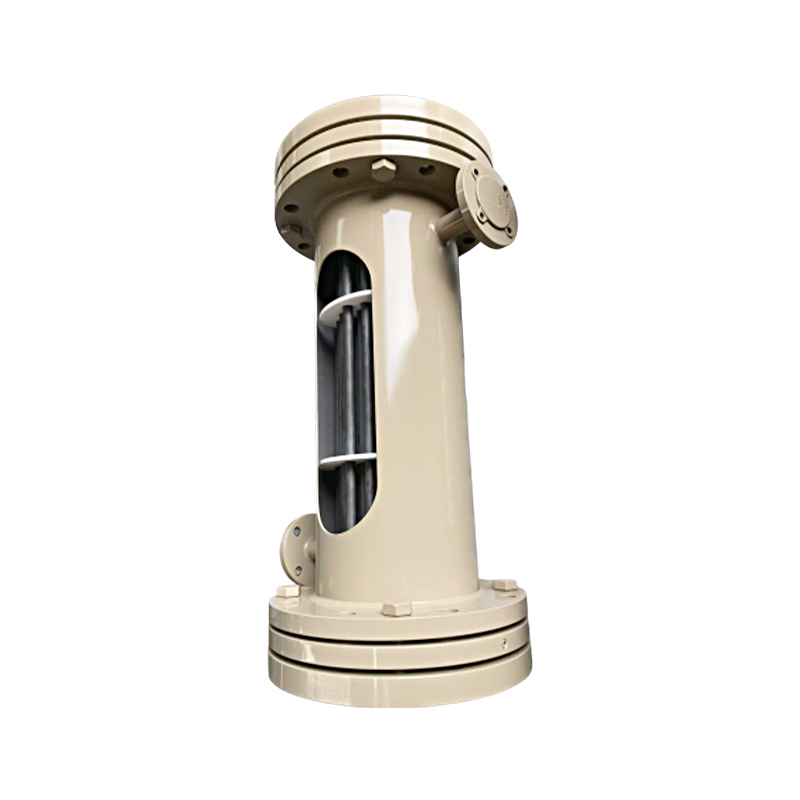Is the cyclone collector resistant to dust accumulation and corrosion?
Release Time : 2025-10-11
In high-temperature industrial systems, the combined structure of cyclone collectors and heat exchangers is increasingly becoming a key technology for improving energy efficiency and reducing emissions. These devices not only recover waste heat from flue gas but also effectively separate particulate-laden airflow. However, high-temperature flue gas often contains large amounts of ash, unburned carbon particles, and corrosive gases. These substances easily deposit or chemically react within the equipment, leading to coating of heat transfer surfaces, blockage of flow channels, and material degradation, ultimately severely impacting the equipment's operating efficiency and lifespan. Therefore, whether a cyclone collector exhibits good resistance to dust accumulation and corrosion is a key indicator of its long-term stable operation.
Anti-dust accumulation is primarily reflected in the device's internal fluid dynamics design. A well-designed airflow path layout ensures a stable spiral motion of flue gas within the device, using centrifugal force to propel particulates toward the walls and rapidly settle, minimizing their suspension time in the heat exchange area. The flow guide structure is carefully calculated to avoid low-velocity zones or dead zones where particles accumulate and form an initial ash layer. Once an ash layer forms, it not only reduces the heat transfer efficiency of the metal wall but also attracts more particles, creating a vicious cycle. Therefore, the interior walls of the equipment are typically designed with smooth curved surfaces to reduce roughness, making it difficult for particles to adhere. The scouring action of the airflow also achieves a degree of self-cleaning. Some high-end designs also employ inclined walls or enlarged settling chambers to accelerate the flow of ash toward the ash outlet, ensuring that separated particles are discharged promptly and avoiding backflow or accumulation.
Material selection is a key defense against corrosion. High-temperature flue gas often contains sulfides, chlorides, or alkali metal vapors. These components react chemically with metals at certain temperatures, causing oxidation, sulfidation, or pitting corrosion. To address this challenge, the main structure of the cyclone collector is often constructed of high-temperature resistant alloys or special stainless steels. These materials maintain a stable oxide film even at high temperatures, preventing further penetration of corrosive media into the substrate. Especially in the heat exchange area, materials must not only be corrosion-resistant but also exhibit excellent thermal conductivity to ensure efficient heat transfer to the cooling medium. Weld seam preparation is also crucial, requiring specialized processes to ensure flawless joints and prevent corrosion from spreading through weak points.
Surface treatment technology further enhances the equipment's protective capabilities. Certain models apply high-temperature-resistant coatings to the heat exchange tubes or the inner wall of the shell. These coatings not only possess high hardness and low surface energy, making them less susceptible to ash adhesion, but are also chemically inert, effectively isolating corrosive gases. The coatings bond firmly to the substrate and resist peeling during thermal expansion and contraction, ensuring long-term protection. Furthermore, the equipment's operating temperature range has been optimized to avoid acid and alkaline dew points, preventing harmful components in the flue gas from condensing into liquid corrosives that adhere to metal surfaces and cause electrochemical corrosion.
Regular maintenance and cleaning mechanisms have also significantly improved the equipment's resistance to ash accumulation. Some systems are equipped with mechanical vibration devices or compressed air pulse cleaning systems to periodically remove loose ash layers adhering to the heat exchange surfaces during operation, preventing them from hardening. The ash discharge port is designed with an automatic air-locking mechanism, ensuring smooth ash discharge without disrupting internal airflow stability due to air leakage.
Ultimately, resistance to dust accumulation and corrosion isn't the product of a single technology; it's the combined effort of structural design, materials science, surface engineering, and operational management. It ensures the cyclone collector maintains efficient heat transfer and stable separation capabilities even under harsh operating conditions, ensuring the continuous and stable operation of the energy recovery system. In the pursuit of efficient, clean, and sustainable industrial development, this inherent "self-protection" capability is the fundamental guarantee of the equipment's long-term value and reliability.
Anti-dust accumulation is primarily reflected in the device's internal fluid dynamics design. A well-designed airflow path layout ensures a stable spiral motion of flue gas within the device, using centrifugal force to propel particulates toward the walls and rapidly settle, minimizing their suspension time in the heat exchange area. The flow guide structure is carefully calculated to avoid low-velocity zones or dead zones where particles accumulate and form an initial ash layer. Once an ash layer forms, it not only reduces the heat transfer efficiency of the metal wall but also attracts more particles, creating a vicious cycle. Therefore, the interior walls of the equipment are typically designed with smooth curved surfaces to reduce roughness, making it difficult for particles to adhere. The scouring action of the airflow also achieves a degree of self-cleaning. Some high-end designs also employ inclined walls or enlarged settling chambers to accelerate the flow of ash toward the ash outlet, ensuring that separated particles are discharged promptly and avoiding backflow or accumulation.
Material selection is a key defense against corrosion. High-temperature flue gas often contains sulfides, chlorides, or alkali metal vapors. These components react chemically with metals at certain temperatures, causing oxidation, sulfidation, or pitting corrosion. To address this challenge, the main structure of the cyclone collector is often constructed of high-temperature resistant alloys or special stainless steels. These materials maintain a stable oxide film even at high temperatures, preventing further penetration of corrosive media into the substrate. Especially in the heat exchange area, materials must not only be corrosion-resistant but also exhibit excellent thermal conductivity to ensure efficient heat transfer to the cooling medium. Weld seam preparation is also crucial, requiring specialized processes to ensure flawless joints and prevent corrosion from spreading through weak points.
Surface treatment technology further enhances the equipment's protective capabilities. Certain models apply high-temperature-resistant coatings to the heat exchange tubes or the inner wall of the shell. These coatings not only possess high hardness and low surface energy, making them less susceptible to ash adhesion, but are also chemically inert, effectively isolating corrosive gases. The coatings bond firmly to the substrate and resist peeling during thermal expansion and contraction, ensuring long-term protection. Furthermore, the equipment's operating temperature range has been optimized to avoid acid and alkaline dew points, preventing harmful components in the flue gas from condensing into liquid corrosives that adhere to metal surfaces and cause electrochemical corrosion.
Regular maintenance and cleaning mechanisms have also significantly improved the equipment's resistance to ash accumulation. Some systems are equipped with mechanical vibration devices or compressed air pulse cleaning systems to periodically remove loose ash layers adhering to the heat exchange surfaces during operation, preventing them from hardening. The ash discharge port is designed with an automatic air-locking mechanism, ensuring smooth ash discharge without disrupting internal airflow stability due to air leakage.
Ultimately, resistance to dust accumulation and corrosion isn't the product of a single technology; it's the combined effort of structural design, materials science, surface engineering, and operational management. It ensures the cyclone collector maintains efficient heat transfer and stable separation capabilities even under harsh operating conditions, ensuring the continuous and stable operation of the energy recovery system. In the pursuit of efficient, clean, and sustainable industrial development, this inherent "self-protection" capability is the fundamental guarantee of the equipment's long-term value and reliability.








